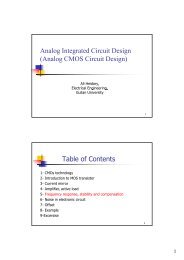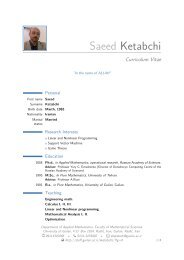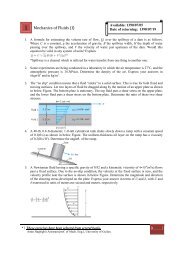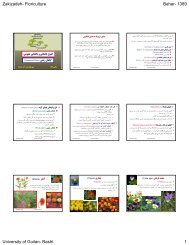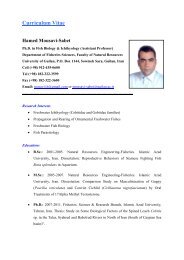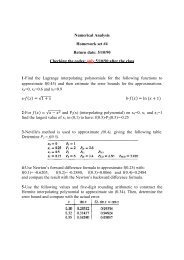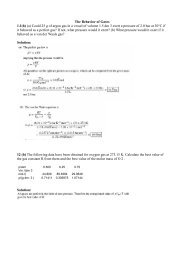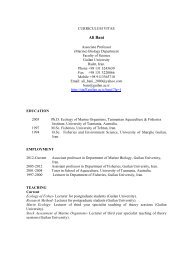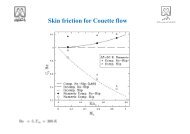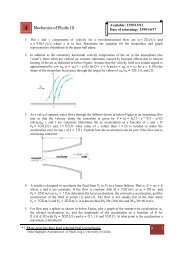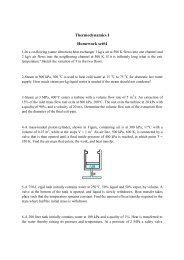Medical Tourism in Developing Countries
Medical Tourism in Developing Countries
Medical Tourism in Developing Countries
- No tags were found...
Create successful ePaper yourself
Turn your PDF publications into a flip-book with our unique Google optimized e-Paper software.
32 ● <strong>Medical</strong> <strong>Tourism</strong> <strong>in</strong> Develop<strong>in</strong>g <strong>Countries</strong>start<strong>in</strong>g with the discussion between Arthur Lewis and Albert Hirshman <strong>in</strong>the 1950s. 46 Lewis contended that sav<strong>in</strong>gs and <strong>in</strong>vestment was crucial fordevelopment while Hirshman said that development was crucial for sav<strong>in</strong>gsand <strong>in</strong>vestment. Afterwards, questions of dim<strong>in</strong>ish<strong>in</strong>g returns to <strong>in</strong>vestment<strong>in</strong> physical capital were followed by endogenous growth theories claim<strong>in</strong>gthat the accumulation of knowledge could offset dim<strong>in</strong>ish<strong>in</strong>g returns.Whichever comes first, Meier and Rauch state, “Few doubt that <strong>in</strong>vestment<strong>in</strong> physical and human capital, f<strong>in</strong>anced primarily by domestic sav<strong>in</strong>gs, iscrucial to the process of economic development.” 47 One group of scholarsdef<strong>in</strong>ed capital as <strong>in</strong>clud<strong>in</strong>g not just physical capital, but also human capital.Both Lucas (1988) and Romer (1986) argued that knowledge andhuman capital added to growth because they <strong>in</strong>creased productivity, sosocieties that <strong>in</strong>vest more <strong>in</strong> human capital will have more growth. 48Grossman and Helpman argued that growth then follows from <strong>in</strong>vestment<strong>in</strong> education of future workers and tra<strong>in</strong><strong>in</strong>g of exist<strong>in</strong>g ones. 49In the discussion of human capital, two concerns are raised for develop<strong>in</strong>gcountries. The first has to do with the production of human capital,and the second has to do with its retention. Indeed, it is not just a questionof tra<strong>in</strong><strong>in</strong>g workers, but also keep<strong>in</strong>g them so that they do not leave andcontribute to another country’s labor force. While the particulars of howdest<strong>in</strong>ation countries tra<strong>in</strong> and reta<strong>in</strong> their health tourism workers is discussed<strong>in</strong> chapter 5, suffice it to say here that <strong>in</strong> order for a country toreta<strong>in</strong> its tra<strong>in</strong>ed workers, it needs to be able to provide them with employment.<strong>Medical</strong> tourism is an <strong>in</strong>dustry that provides work for both skilledand unskilled workers. While that is true for nonmedical tourism also, theproportions are very different, as much of nonmedical tourism occurs <strong>in</strong>the <strong>in</strong>formal sector <strong>in</strong> which jobs are labor <strong>in</strong>tensive and low pay<strong>in</strong>g. 50The Multiplier EffectTrade and foreign <strong>in</strong>vestment <strong>in</strong> medical and nonmedical tourism contributedirectly to rais<strong>in</strong>g the gross domestic product. They also have a multipliereffect <strong>in</strong>sofar as they result <strong>in</strong> forward and backward l<strong>in</strong>kagesthroughout the economy. The arrival of a tourist/patient has l<strong>in</strong>kages thatresult <strong>in</strong> <strong>in</strong>dustrialization extend<strong>in</strong>g well beyond the tourist/health sectors,as well as rises <strong>in</strong> employment, <strong>in</strong>comes, and aggregate demand. These <strong>in</strong>turn <strong>in</strong>crease production, employment, and <strong>in</strong>come as the country moveson a growth trajectory. While sales and output multipliers are relevant,employment and <strong>in</strong>come multipliers are the most important measure oftourism’s role <strong>in</strong> economic growth. They measure the ratio of the <strong>in</strong>itial<strong>in</strong>crease <strong>in</strong> tourism expenditure to its f<strong>in</strong>al impact on employment or





